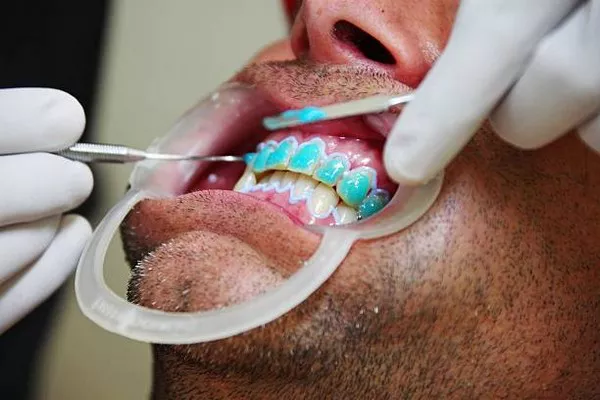White fillings, also known as composite fillings, are a popular dental treatment used to repair teeth that have been damaged by decay or trauma. Unlike traditional silver amalgam fillings, white fillings are made of a composite resin material that can be color-matched to the natural shade of your teeth, making them virtually indistinguishable from the surrounding tooth structure.
One of the primary reasons why white fillings are preferred over other types of fillings is their aesthetic appeal. Since they blend seamlessly with the natural tooth color, white fillings are often chosen for front teeth or other visible areas of the mouth where appearance is a concern. Additionally, white fillings bond directly to the tooth surface, which helps to preserve more of the natural tooth structure compared to amalgam fillings, which require more aggressive tooth preparation.
Cost Factors
The cost of white fillings can vary depending on several factors, including the size of the filling, the location of the tooth, and the dentist’s fees. Generally, larger fillings will cost more than smaller ones, as they require more material and time to complete. Additionally, fillings on teeth towards the back of the mouth may be more expensive than those on front teeth, as they can be more challenging to access and require additional skill to place.
Dentist’s fees can also influence the cost of white fillings. Some dentists may charge higher rates for their services based on their level of expertise, the quality of materials used, and the geographic location of their practice. It’s essential to discuss pricing with your dentist beforehand to understand the total cost of your treatment plan.
Insurance Coverage
Many dental insurance plans cover white fillings as a standard preventive or restorative procedure. Typically, insurance plans will pay a percentage of the cost of the filling, known as the reimbursement rate, while the patient is responsible for paying the remaining portion, including any deductibles or copayments.
The percentage of the cost covered by insurance can vary depending on the specific plan and the terms of coverage. In some cases, insurance may cover up to 80% of the cost of white fillings, while in others, coverage may be limited to 50% or less. Additionally, some plans may have annual maximums or limitations on the number of fillings that can be covered within a certain time frame.
Average Cost with Insurance
With insurance coverage, the cost of white fillings can range from $25 to $75 for a single-surface filling, depending on the reimbursement rate and any out-of-pocket expenses such as deductibles or copays. For more extensive fillings or multiple surfaces, the cost may be higher but still within a reasonable range.
It’s essential to check with your insurance provider or review your plan documents to understand your coverage and any potential out-of-pocket costs associated with white fillings.
Out-of-Pocket Costs
Without insurance coverage, the average out-of-pocket cost for white fillings can range from $150 to $500 or more, depending on the size of the filling and the dentist’s rates. Since white fillings are considered a cosmetic option in some cases, they may not be fully covered by insurance, leaving patients responsible for covering the entire cost of treatment.
Discussing payment options and financing plans with your dentist can help you manage out-of-pocket expenses and make white fillings more affordable.
Choosing the Right Insurance Plan
When selecting a dental insurance plan, it’s essential to consider coverage for white fillings and other preventive and restorative procedures. Look for plans that offer comprehensive coverage with reasonable reimbursement rates and minimal out-of-pocket costs.
Reviewing plan details such as annual maximums, waiting periods, and coverage limitations can help you choose a plan that meets your needs and budget. Additionally, consider whether the plan allows you to visit the dentist of your choice or if you are limited to a specific network of providers.
Additional Costs
In some cases, there may be additional costs associated with white fillings that are not covered by insurance. For example, if the filling requires additional procedures such as root canal therapy or crown placement, these services may incur separate fees.
Additionally, some dentists may offer optional treatments or materials, such as desensitizing agents or tooth desensitizing agents, that can enhance the longevity and performance of white fillings but may come with an additional cost.
Cost Comparison
When comparing the cost of white fillings with other types of fillings, such as silver amalgam or gold, it’s essential to consider the long-term value of each option. While white fillings may have a higher upfront cost, they offer several advantages, including improved aesthetics, durability, and preservation of natural tooth structure.
Silver amalgam fillings may be less expensive initially, but they can be more noticeable and may require more extensive tooth preparation. Gold fillings are the most expensive option but are known for their longevity and durability.
Ultimately, the choice between white fillings and other types of fillings will depend on your individual needs, preferences, and budget. Discussing your options with your dentist can help you make an informed decision and achieve the best possible outcome for your dental health.
Conclusion
The cost of white fillings with insurance can vary depending on several factors, including the size of the filling, the location of the tooth, and the dentist’s fees. While insurance coverage can help offset some of the costs, patients may still be responsible for out-of-pocket expenses such as deductibles or copays. Choosing the right insurance plan and discussing payment options with your dentist can help you manage the cost of white fillings and maintain optimal dental health in the long term.
FAQs About White Fillings
1. Is it worth paying for white fillings?
Yes, many patients find white fillings to be worth the investment. White fillings, also known as composite fillings, offer several advantages over traditional silver amalgam fillings. They are more aesthetically pleasing since they can be color-matched to the natural shade of your teeth, making them virtually indistinguishable. Additionally, white fillings bond directly to the tooth structure, preserving more of the natural tooth compared to amalgam fillings, which require more aggressive preparation. While white fillings may have a higher upfront cost, many patients find the improved appearance and preservation of tooth structure to be worth it in the long run.
2. How much does a filling cost in Hong Kong?
The cost of fillings in Hong Kong can vary depending on several factors, including the type of filling material used, the size of the filling, and the dentist’s fees. On average, a basic filling in Hong Kong can range from HK$500 to HK$1500 or more. However, prices may vary between dental clinics and depending on the complexity of the procedure.
3. How much does a white filling cost?
The cost of white fillings can vary depending on factors such as the size of the filling, the location of the tooth, and the dentist’s fees. On average, a single-surface white filling can cost between HK$800 to HK$2000 or more in Hong Kong. However, prices may vary depending on the specific clinic and geographic location.
4. Are white tooth fillings more expensive?
White tooth fillings, also known as composite fillings, may be slightly more expensive than traditional silver amalgam fillings. This is due to the cost of the composite resin material used and the additional time and skill required to place white fillings compared to amalgam fillings. However, many patients find the improved aesthetics and preservation of tooth structure offered by white fillings to be worth the slightly higher cost.































